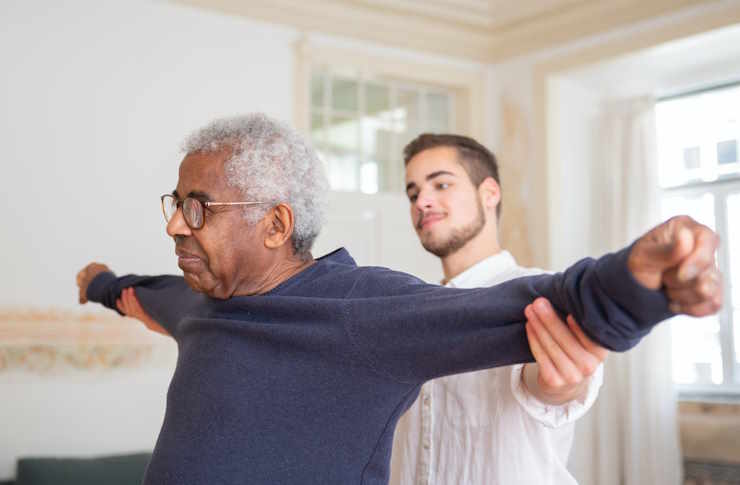Latest Parkinson's Treatment and Ways to Manage Symptoms
Parkinson's disease is a progressive neurological disorder that affects movement, balance, and coordination. While there is no cure for Parkinson's, various treatments and management strategies can help improve quality of life for those living with the condition. This article explores the latest approaches to Parkinson's disease treatment and offers practical ways to manage symptoms at home.

What are the current treatment options for Parkinson’s disease?
The treatment of Parkinson’s disease has evolved significantly in recent years. Current approaches focus on managing symptoms and improving overall function. Treatment options may include a combination of therapies tailored to each individual’s needs. These can range from physical therapy and occupational therapy to speech therapy and nutritional counseling. Deep brain stimulation (DBS) is a surgical option that has shown promise for some patients with advanced Parkinson’s. Additionally, emerging research is exploring the potential of stem cell therapy and gene therapy, though these are still in experimental stages.
How can symptoms be managed at home?
Managing Parkinson’s symptoms at home is crucial for maintaining independence and quality of life. Regular exercise is one of the most effective ways to manage symptoms. Activities such as walking, swimming, or tai chi can help improve balance, flexibility, and overall mobility. A healthy diet rich in fruits, vegetables, and whole grains can support overall health and potentially alleviate some symptoms. Creating a safe home environment by removing tripping hazards and installing grab bars can prevent falls. Stress reduction techniques like meditation or deep breathing exercises can also be beneficial, as stress can exacerbate symptoms.
What role does physical therapy play in Parkinson’s treatment?
Physical therapy is a cornerstone of Parkinson’s disease treatment. A physical therapist can design a personalized exercise program to address specific symptoms and improve overall function. These programs often focus on improving balance, flexibility, and strength. Exercises may include stretching, resistance training, and aerobic activities. Physical therapists can also teach strategies for overcoming movement difficulties, such as techniques for initiating movement or preventing freezing episodes. Additionally, they can provide guidance on using assistive devices like canes or walkers to enhance mobility and independence.
How can speech and swallowing difficulties be addressed?
Speech and swallowing problems are common in Parkinson’s disease. Speech therapy can be highly effective in addressing these issues. A speech-language pathologist can teach techniques to improve voice volume, clarity, and speed of speech. They may also recommend exercises to strengthen the muscles involved in speaking and swallowing. For swallowing difficulties, specific techniques and dietary modifications can be introduced to make eating and drinking safer and more comfortable. In some cases, assistive communication devices may be recommended to help individuals express themselves more effectively.
What lifestyle changes can help manage Parkinson’s symptoms?
Lifestyle modifications can significantly impact symptom management in Parkinson’s disease. Establishing a consistent sleep routine can help combat fatigue and improve overall well-being. Engaging in social activities and hobbies can boost mood and cognitive function. Adapting daily tasks to conserve energy, such as sitting while preparing meals or using adaptive utensils, can help maintain independence. Regular mental stimulation through activities like puzzles, reading, or learning new skills can support cognitive health. It’s also important to stay connected with support groups or counseling services to address the emotional aspects of living with Parkinson’s.
When should you consult a doctor about Parkinson’s symptoms?
While regular check-ups are essential for managing Parkinson’s disease, certain situations warrant immediate medical attention. Consult a doctor if there is a sudden worsening of symptoms, especially if accompanied by severe pain or difficulty breathing. Unexplained falls, significant changes in balance, or new movement difficulties should also be evaluated promptly. If there are signs of depression, anxiety, or cognitive changes, it’s important to seek medical advice. Additionally, any new symptoms or side effects potentially related to treatment should be discussed with a healthcare provider. Regular communication with your medical team is crucial for optimal management of Parkinson’s disease.
In conclusion, while Parkinson’s disease presents significant challenges, a multifaceted approach to treatment and symptom management can greatly improve quality of life. From medical interventions to lifestyle modifications and home-based strategies, there are numerous ways to address the symptoms of Parkinson’s. By staying informed about the latest treatment options and working closely with healthcare providers, individuals with Parkinson’s can maintain their independence and well-being for as long as possible.
This article is for informational purposes only and should not be considered medical advice. Please consult a qualified healthcare professional for personalized guidance and treatment.




